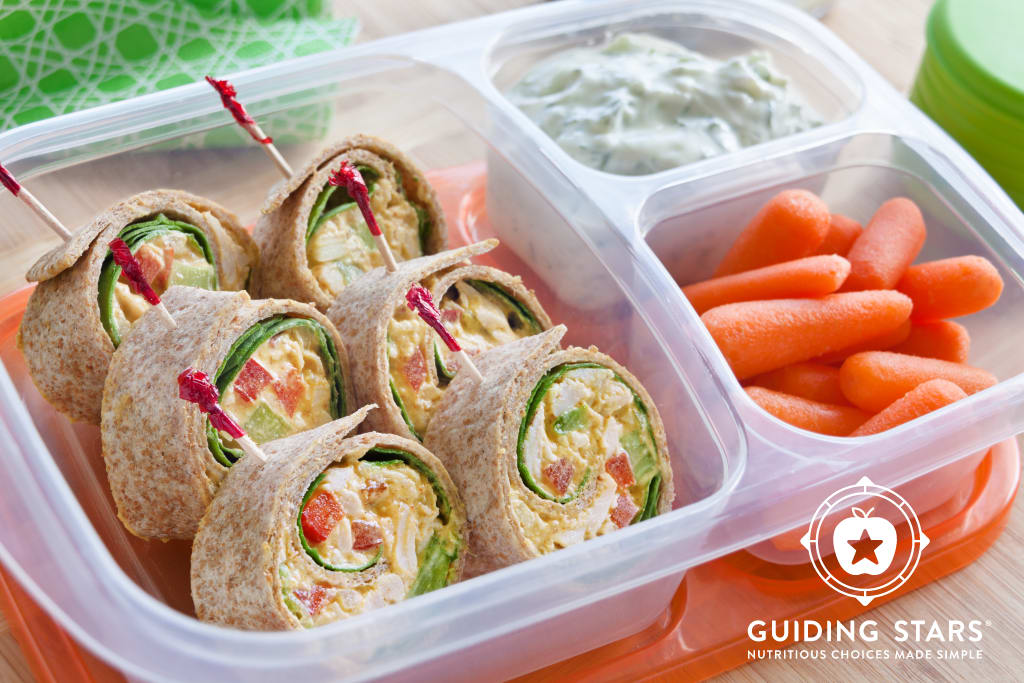
One of my favorite aspects of being a retail dietitian is my access to the supermarket. I recognize that sounds odd, as most folks view the supermarket as the second step in their plan/shop/cook process that generally feels like a chore. For me, spending so much time in the store means that I’m there to see the ever-expanding number of packaged foods available on our store shelves. The movement toward better-for-you products in our supermarket means that we have access to convenient items that make it easier to meet our nutrition goals even when we need to need a quick meal (or easy school lunch).
Let’s consider lunch packs, the packaged combinations of high-sodium lunch meat, cheese, and crackers that made an early debut as a ready-to-go school lunch option. Today there are many of these items on the market that are composed of lower sodium and more healthful options. That said, they still may not earn a Guiding Star. In this case, I believe there is another strategy we can use to decide if a packaged food is a good choice.
What role does it play for you?
I’m thinking more about prepackaged bento box style options. Are these easy to simply grab? Sure! But isn’t it also easy to add your own hand-picked options to a reusable bento box? When you consider the environment and your budget, it’s far better to purchase packages of foods that offer more than one serving and to decrease plastic use (even if it’s recycled). That said, another packaged item that includes a food that takes more time to prepare is probably worth it because it plays a more helpful role in your kitchen.
How long is the ingredient list? Do you recognize the ingredients?
Picking up a packaged product can be a helpful addition to a shopping cart when it allows you round out a healthy, balanced day. One of the first steps to ensuring you’re choosing the correct convenience option is to read the ingredient list. Seek shorter lists with “yes, you can read them” ingredients and you are more likely to be picking up an item that’s made the way you would (if only you had the time!).
Is there adequate protein and/or heart-healthy fat? What about added sugar?
In addition to reviewing the ingredient list, there are certain attributes that should be considered. Does this product provide protein and/or heart-healthy fat? Is it high in added sugar? Seek satiating options with protein and fat to sustain you. Avoid foods high in added sugar, which can contribute to obesity and raise risk of diabetes and heart disease.
Are the calories valuable?
Okay, I realize that to ask yourself if the calories are “valuable” is a confusing (and very dietitian of me!) question. However, the answer to this essential question is highly correlated with the afore mentioned attributes. A product with adequate protein or heart-healthy fat that’s low in added sugar is likely to offer calories that will be a valuable part of your day and help you avoid overeating. The opposite of this would be calories that don’t sustain you and ultimately simply add calories to your day rather than help you curb your appetite. Lastly, consider the portion. A small portion for many calories is likely not a good choice.